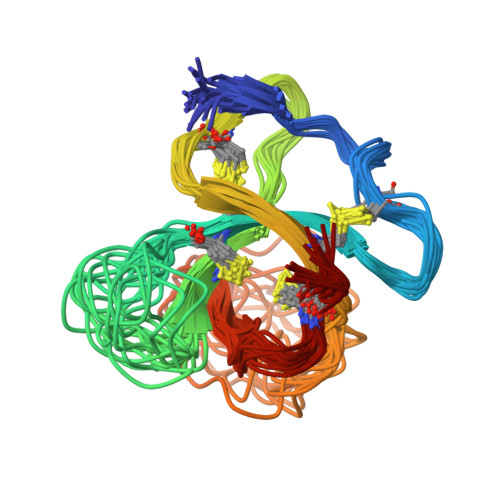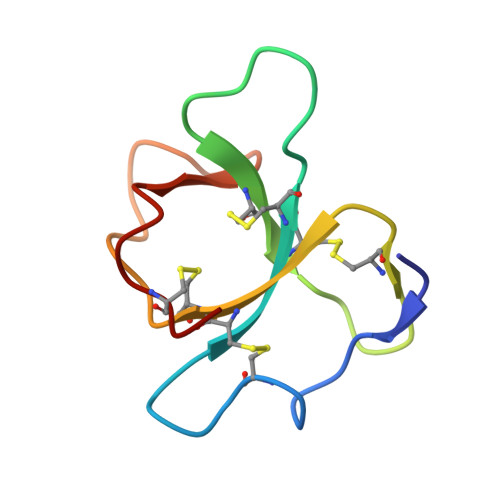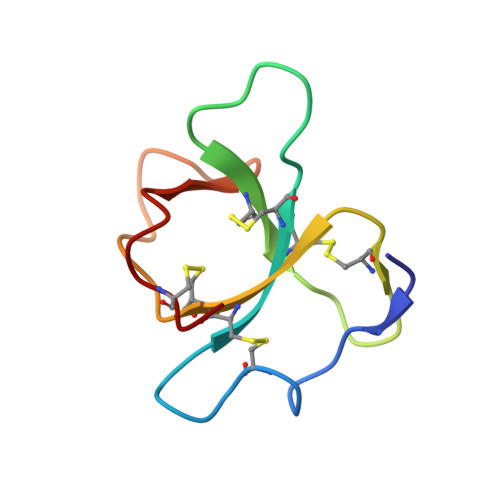Self-assembly of functional, amphipathic amyloid monolayers by the fungal hydrophobin EAS
Macindoe, I., Kwan, A.H., Ren, Q., Morris, V.K., Yang, W., Mackay, J.P., Sunde, M.(2012) Proc Natl Acad Sci U S A 109: E804-E811
- PubMed: 22308366
- DOI: https://doi.org/10.1073/pnas.1114052109
- Primary Citation of Related Structures:
2LFN - PubMed Abstract:
The hydrophobin EAS from the fungus Neurospora crassa forms functional amyloid fibrils called rodlets that facilitate spore formation and dispersal. Self-assembly of EAS into fibrillar rodlets occurs spontaneously at hydrophobic:hydrophilic interfaces and the rodlets further associate laterally to form amphipathic monolayers. We have used site-directed mutagenesis and peptide experiments to identify the region of EAS that drives intermolecular association and formation of the cross-β rodlet structure. Transplanting this region into a nonamyloidogenic hydrophobin enables it to form rodlets. We have also determined the structure and dynamics of an EAS variant with reduced rodlet-forming ability. Taken together, these data allow us to pinpoint the conformational changes that take place when hydrophobins self-assemble at an interface and to propose a model for the amphipathic EAS rodlet structure.
Organizational Affiliation:
School of Molecular Bioscience, University of Sydney, Sydney, New South Wales 2006, Australia.
















